 |
| ©Everything Audio Network |
Brevis...
Price: $14,200
Likes: smoother, more open image
Dislikes: I need a component upgrade
Wow Factor: one major-league stereo amp
More info: Pass Labs X350.8For eight years, I’ve used the Pass Labs X350.5 as my primary reference hi-fi amp.The amp was perfect for hi-res audio playback with a fast, massively powered, spacious presentation that was personified through any speaker no matter how big and complicated to drive. However, Nelson Pass and company are always seeking ways to improve their products, and it was inevitable that the the amplifier line would received an upgrade, which is now the .8 series.
The X350.8 is the new, high-power, Pass Labs stereo flagship that offers that gorgeous presentation snap that I love, but Pass also was able to make it more musical with an increased ease in the midrange and top end. Much of the new design was lifted from Pass’ high-dollar, super Class A XS series (see the XS 150 review I did last year).
Features
Priced at $14,200, the X350.8 not only gets a performance upgrade, but also a facelift, including a new faceplate, larger current meter and the same speaker binding posts, with tensioned adjustments knobs, from the XS-Series. Other niceties includes 12V trigger, and rear-mounted lift handles.
The X350.8 specs include: 26.5 dB gain; 1.5 Hz-200 kHz frequency response; 350 wpc/8 ohms at less than 1% distortion, 750 wpc/8 ohms at less than 1% distortion; 50 kohms (unbalanced)/100 kohms (balanced) input impedance, 150uV damping factor, 50v/uS slew rate. Power consumption at idle is 550 watts; consumption is less than 1 watt in standby mode.
The X350.8 with its massive transformer, heavy metal chassis and extensive heat sinking is no light weight. The 3-rack high amp weighs in just shy of 130 pounds and because of its concentrated heft should be lifted with two people.
Pass has replaced the great-sounding X350.5, which has been successful for more than 10 years in the analog audio amplifier product niche. The X350.8 delivers an increase in audible detail, width and depth — with noticeable musical smoothness — especially on Hi-Res Jazz and Classical. Yet the amp retains the bass slam and ability to tear your head off with horsepower.
The .8 series utilizes the Supersymmetry-MOSFET circuit that Pass has continually improved since its introduction in 2000, but the key to the .8 circuit is deeper Class A operation. “The stages of the larger Point 8 amplifiers bias more deeply into the Class-A operating region,” Pass notes in the .8 manual background notes. “Their larger push-pull, Class-A operating envelopes deliver low distortion and additional loudspeaker control at ordinary listening levels. And higher power MOSFETs, many more than usual, increase the amplifiers’ Class-A operation while running at fractions of their stated specs to enhance both performance and reliability.”
And for the first time since introducing the Supersymmetry design, each .8 model amplifier input circuit has been optimized to its particular output section. On the .5 line, the input specs were all the same, no matter what the power rating. According to Pass: “We uniquely molded each model’s front end to the specifics of its output stage so that each of the nine amplifiers’ front ends vary in size, voltage, bias current, dissipation, and single-ended vs. push-pull bias distribution.
“The directly coupled front ends, which house the input and voltage gain stages, maximize each model‘s output stage performance, while imparting to each model its own subtle and unique sonic signature,” Pass emphasized.
 |
| All the connections you need |
In addressing the Class-A bias current running at higher power than the .5 Series, Pass noted the differences of the two designs: “While we still use single-ended Class A bias current in the output stage as with the .5 series, this bias has been increased in proportion to the push-pull bias and creates a second harmonic character that holds to much higher power levels than previously. The bias current figures are now adjusted specifically in each model to control the relative amount and timing of the second and third harmonics of the output.”
Pass further elaborated on .8 enhancements, such as no caps in the signal path. “The stability of the circuitry is now such that there are no capacitors or inductors in series with the signal and no frequency compensation (including output Zobel networks) anywhere. The only capacitors are in the power supply and DC reference voltages.”
Other .8 upgrades include larger power supply, more storage capacitance, more precise reference voltages, and new, larger heat sinks.
The setup
I installed the X350.8 in my main audiophile room with a number of amps on hand for comparison including: the original X350.5, a Pass XA30.5 all Class-A MOSFET stereo amplifier, Rogue Audio Medusa digital/tube hybrid, Bryston 14B SST bipolar output stereo amplifier (600 wpc), and a classic Macintosh MC275 tube stereo amplifier.
Preamplifiers include the excellent tube-design Rogue Audio RP-5 (click here to see the review), Coda High-Current Preamplifier, Pass Labs XP-10. I also used several DACS with preamp outputs, including the Benchmark DAC2-DX, Oppo HA-1 (via the discrete headphone output), Essence HDACC and the Mytek Manhattan.
Source gear consisted of the Oppo BDP-105, Pioneer Elite BD-88 universal player, ClearAudio Emotion turntable with Benz MC cartridge and an Asus Android tablet with USB Audio Player Pro and a 2014 Macbook Pro; I played all of my 24/352 and 24/384 and DSD download tracks from the tablet or Mac.
We powered several sets of speakers including my MartinLogan Montis electrostatics, KEF R900 towers (review upcoming), and Westlake LC8.1 and Legacy Studio stand speakers. The speakers were connected to the amps via Wireworld’s ultra-accurate Eclipse speaker wire connects.
The components also were linked using Wireworld unbalanced and balanced Eclipse cables. Essential Sound Products Essence II Reference power cords and power strip plugged all the gear to the AC line, which an isolated circuit on its own box.
The audition
Having the X350.5 on hand for comparison, provided the ideal setup to hear the differences between the two Pass designs. I have listened to the .5 hundreds of times in the eight years I have had the reference amp in my system; I know its sound quite well. Although the specs are similar, the .8 definitely sounds different than the .5.
The .5 always serves up a generous image, spacious front-to-back and L to R imaging, and it delivers major league slam on the bass. It has massive power delivery and has always handled whatever kind of music and speaker I through at it.
However, there has always been a slight high midrange/low treble coolness quality that does not distract from the music experience, but you notice it on drum cymbals, keyboards, etc.
The .8 has all the bass of the .5, but it relays two key sonic differences: the increase in space impression and a softening of the cool transients that I hear in the .5. In fact, the softness makes various instruments a bit more musical and less analytical than the .5.
Since the .8 borrows a bit from the Xs Series, which has the widest deepest soundstage I have heard from an amplifier, its openness impression was expected. Sonic layers of various hi-res music reveal an increased separation over .5 that makes the listening experience much closer to live instruments.
 |
| This DMP-SACD sounds terrific via the Pass X350.8 |
Listening to the Tom Jung-recorded Warren Bernhardt — So Real SACD, I could clearly hear the .8‘s sonic signature. The upper register of the Steinway piano came through with less of a metallic tinge and more of the piano’s wood tone. Yet, the space between piano, drums and bass widens, with instrument reverb and trailing harmonics remaining intact. I would not have expected the .8 to offer up so much more in its space impression, but it did.
On the Joe Pass/Ella Fitzgerald — Take Love Easy DSD transfer, Joe Pass’ Gibson ES-175 jazz runs and gentle, warm picking technique is gorgeous through the .8. The stereo recording of the guitar allows more space to be captured, yet the .8 makes it so live sounding — like Mr. Pass playing in your living room. And it does not hurt to have the ML electrostatics as the delivery devices, though the .8’s spaciousness was also observed through the other speakers as well. The KEF multi-driver R900 really filled out the recording’s spectrum sounds as well. And of course, relayed the amp’s bass capabilities, The ML have built-in subwoofers.
On classical music, the .8/ML combo really nailed the violin and piano textures on the Isabelle van Keulen and Hannes Minnaar — Beethoven Complete Sonatas For Piano and Violin, a four SACD set (Challenge Classics). The up-front recording position of the violin can sound slightly edgy on some amps, especially high negative feedback bipolar output amps. The ‘350.5 sounds slightly brighter on the violin of this recording — a characteristic I only noticed in direct comparison to the .8. The Pass X350.8 delivers the solo violin with the smoothness of a tube amp, yet the dynamics are still impressively real and fast. Kind of like the difference I sometimes hear in DSD vs. PCM comparisons.
 |
| An ideal speaker/amp combo |
This smooth texture is 99 percent positive on most kinds of music, especially PCM in the 16-bit 44.1 kHz realm, but on some laid back recordings, they may sound even more laid back. For those kinds of recordings I like to team up the X350.8 with fast, transparent pres such as the Pass XP-10, my Coda or the HP output of the Oppo HA-1.
Om Pop and Rock music, the .8‘s wide, spacious soundstage and the musical smoothness open up many of the sampled recordings, while keeping the midrange/low treble-heavy nature of many modern recordings grit free. The massive power supply, low distortion and slew rate also keep Pop bass nice and taut. The KEF’s kicked out fairly deep, yet tight bass at thunderously loud levels that I could not endure for any length of time.
The 24/88.2 download of The Rolling Stones - Some Girls is a perfect example the .8’s transient finesse. On the X350.5, the drum cymbals on “When the Whip Comes Down” sounded a little dry through the ML’s, but the same instrument was more at ease via the .8 and a bit more open in the cymbal’s airiness.
Judy Collins’ new hi-res 24/88 album, Strangers Again (download on HDTracks) was produced, recorded and mastered by Alan Silverman. The collection of songs is simply a sonic masterpiece via the X350.8 and the Montis' combo.
Judy Collins’ new hi-res 24/88 album, Strangers Again (download on HDTracks) was produced, recorded and mastered by Alan Silverman. The collection of songs is simply a sonic masterpiece via the X350.8 and the Montis' combo. Ms. Collins’ rich, feminine voice and the assorted guest vocalists — combined with some really nice guitar playing and band accompaniment — create a Pop recording rarely heard these days. Open, detailed layers of music in their proper space combined with such a beautiful voice; you gotta here this album. Listening to it on a Pass .8 is an extra bonus.
Since the ML’s have built-in subwoofers, I sampled a substantial number of recordings using the system components and fully passive speakers. The KEF R900s, Pass SR-1s, my little Westlake, and Legacy Studio bookshelfs, as well as a pair of Bryston A2 three-ways.
The KEFs really sounded balanced with this amp, with just under 35 Hz bass that sounded deeper than it measured on my RTA in my room. The Bryston's relayed the X350.8’s smooth operators character, especially in the midrange. Judy Collins’ voice was as pure as silk via that combo.
The .5 always serves up a generous image, spacious front-to-back and L to R imaging, and it delivers major league slam on the bass. It has massive power delivery and has always handled whatever kind of music and speaker I through at it.
In terms of operation, there were no problems with the Pass, which is typical with their amps. Never had one ever have a problem. The X350.8 runs a bit warm, but no where near as warm as the XS-150s I reviewed last year. At well over 120 pounds, the amp needs a secure place for location, and I can’t emphasize enough that two people are necessary to move it safely. Other teutonic observations: the .8‘s current meter seldom moves from its left of center position, unless you are really cranking it up with really big speakers. There also is a switch to illuminate the meter if you so choose. I love that blue hue when the light is on.
The verdict
My hat is off to Nelson Pass and Company. They have managed to replace the great-sounding X350.5, which has been successful for more than 10 years in the analog audio amplifier product niche. The X350.8 delivers an increase in audible detail, width and depth — with noticeable musical smoothness — especially on Hi-Res Jazz and Classical. Yet the amp retains the bass slam and ability to tear your head off with horsepower, should you so choose to use it for Pop, Metal or any other loud and dense kind of music.
This is a high-powered, audiophile amp (and yes, at a high price) that delivers the desired sound for almost any kind of room. And it will drive any speaker, no matter how difficult the load. Without hesitation, the X350.8 receives the Stellar Sound Award, and a nomination for the 2015 Everything Audio Network Luxury Class Product Of The Year.
John Gatski has been evaluating consumer, audiophile, home cinema and professional audio gear since 1988. In 1995, he created Pro Audio Review, and he has written for Audio, Laserviews, Enjoy The Music, The Audiophile Voice, High Performance Review Radio World and TV Technology. Everything Audio Network is based in Kensington, Md. Articles on this site are the copyright of the ©Everything Audio Network. Any unauthorized use, via print or Internet, without written permission is prohibited. John Gatski can be reached via everything.audio@verizon.net


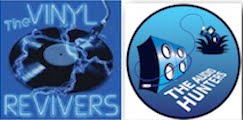

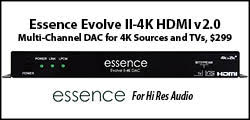

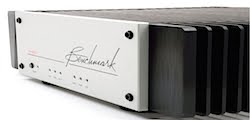


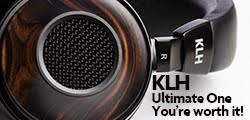
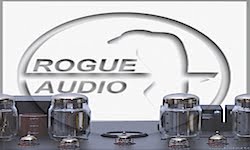
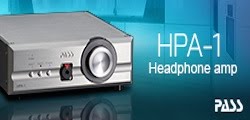

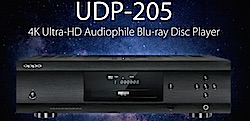


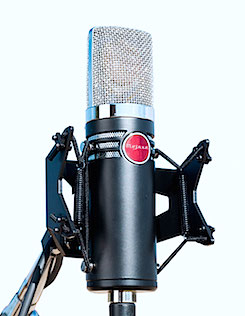
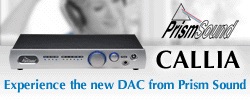
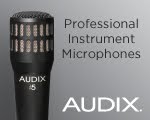

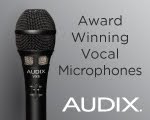
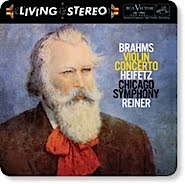





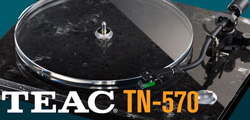


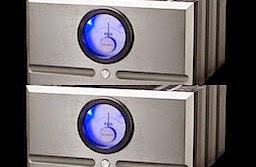
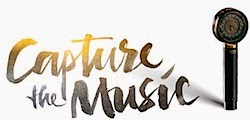


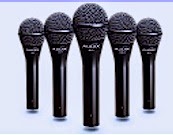


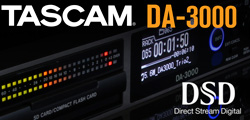

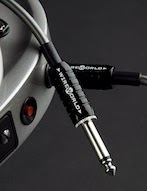

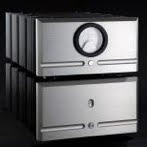









No comments:
Post a Comment